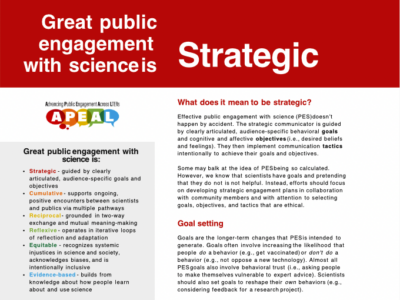Shaped by fire: the Bonanza Creek LTER

Bonanza Creek was quick to remind me of its true nature: everything about its ecology follows the flame.

Bonanza Creek was quick to remind me of its true nature: everything about its ecology follows the flame.

With a renewed five-year award, the LTER Network Office (LNO) will focus on fostering new synthesis science, broadening participation in ecology, and training a new generation of ecologists.

How does an unaffiliated team wind up presenting a poster on decades of LTER data? It begins, as it so often does, with a need for data.

Grad student Nick Link spent two days in Utqiaġvik, Alaska with BLE LTER experiencing research on the Arctic coast.

We’re excited to announce the 2024 LTER Photo Contest!
This year, sites go head to head for bragging rights across the network.

SCRREE Framework for Public Engagement with Science The APEAL Project endeavors to put the 6-part SCRREE framework for public engagement into action at Long Term Ecological Research (LTER) sites. SCRREE (Strategic, Cumulative, Reciprocal, Reflexive, Equitable, and Evidence-based) was developed by Sarah Garlick and John Besley, with support from the Consult with Catalyst team and a… Read more »

The Long-Term Ecological Research (LTER) Network Office is excited to announce that two new synthesis working groups will launch in 2024.

It has been an incredibly opportunity to explore the Channel Islands and beyond and to meet our coastline’s unique marine life.

“Wait, what? Alaska, but I thought you said you went to school in Texas!”

Data Nuggets, operated by the KBS LTER, started its third round of funding from the National Science Foundation to improve data literacy in K-16 students.